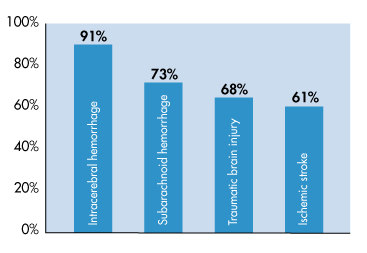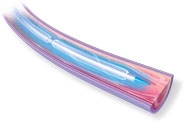Fever control
Cooling from the inside out – precise, efficient control
Fever affects the treatment success rate
Controlling core temperature is essential for the patient’s health and crucial for good neurological functioning.
 |
This is especially true for patients in neuro-intensive care units. Any fever generally occurring in neurologically damaged patients and neurosurgery patients is associated with poor treatment results. Even a small increase in body temperature can result in further neurological damage, which in turn damages even larger areas and consequently causes the loss of nerve cells. (Ask us about studies and research) |
Occurrence of fever in neuro-intensive care units
A one-degree temperature rise increases the risk of a bad outcome by a factor of 2.22.
Reports show that a mild fever results in patient mortality almost doubling, while a high fever can even triple the mortality rate. (Ask us about studies and research)
Fever management is part of standard therapy
Fever management is recommended for treating neurological damage such as ischaemic stroke, intracerebral haemorrhage, subarachnoid haemorrhage, and traumatic brain injury by the following organizations:
- American Stroke Association
- American Association of Neurological Surgeons
- European Stroke Initiative
- American Heart Association
- International Liaison Committee of Resuscitation
IVTM provides the speed and control required by current fever management protocols
Temperature is most efficiently controlled by cooling from the inside out.
Patients can be cooled rapidly and precisely, and kept reliably at the target temperature using ZOLL’s intravascular temperature management (IVTM).
The majority of critically ill patients require central venous access, both for monitoring and regulating the fluid balance, and for the rapid administration of blood products and intravenous medication.
The IVTM catheter combines superior fever management with the functions of a standard central venous catheter
Intravascular temperature management is superior to surface cooling
Moreover, it is also the most reliable temperature regulation method:
- fever is reduced by 85%
- intracranial hypertension is reduced by 76%
- the target temperature remains stable for over 96% of the time
As IVTM cools from the core outwards, a small number of patients (3.7%) suffer from shivering and require smaller doses of sedatives, narcotics and neuromuscular blockers.
Discover all the advantages of IVTM compared to other methods


